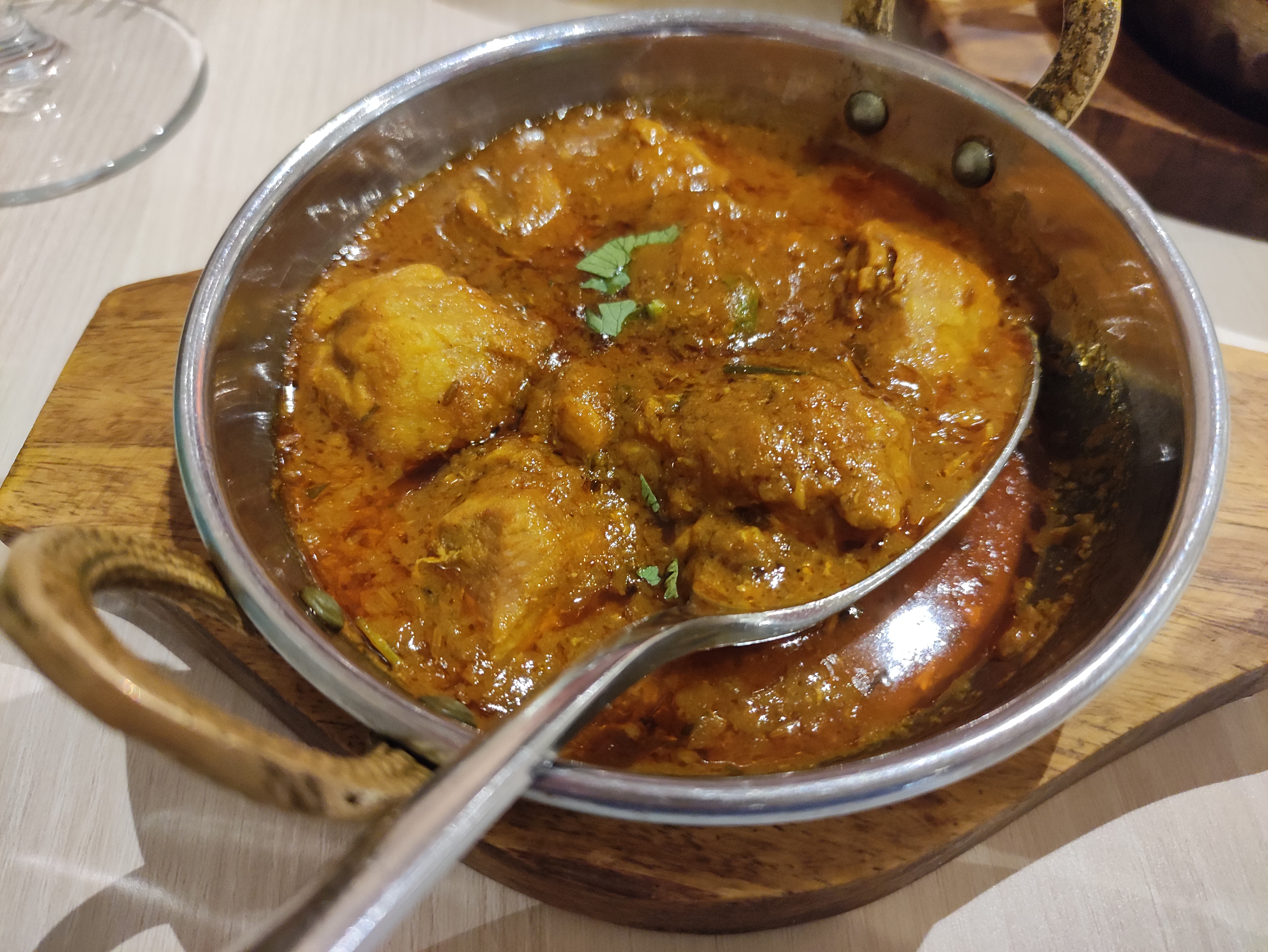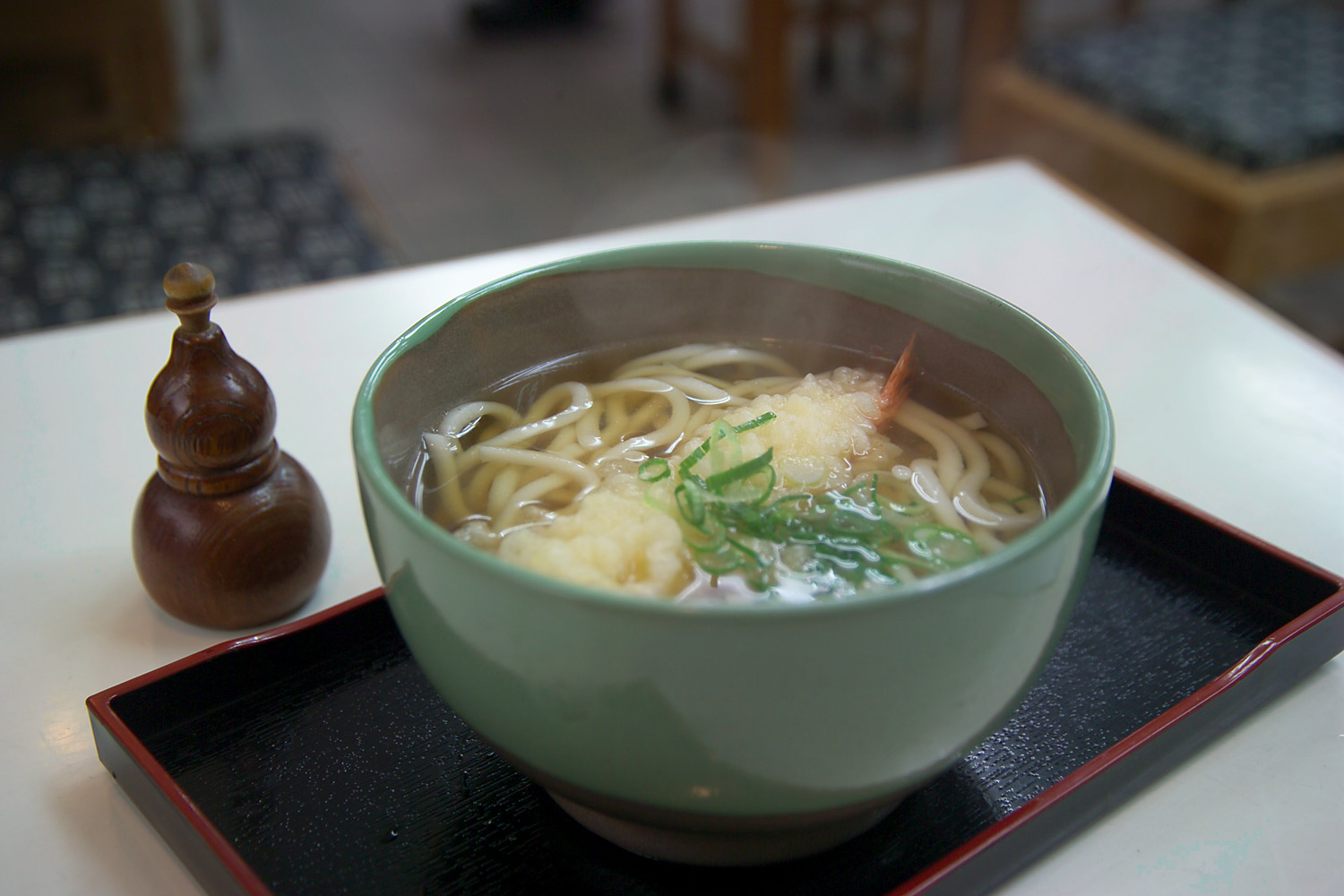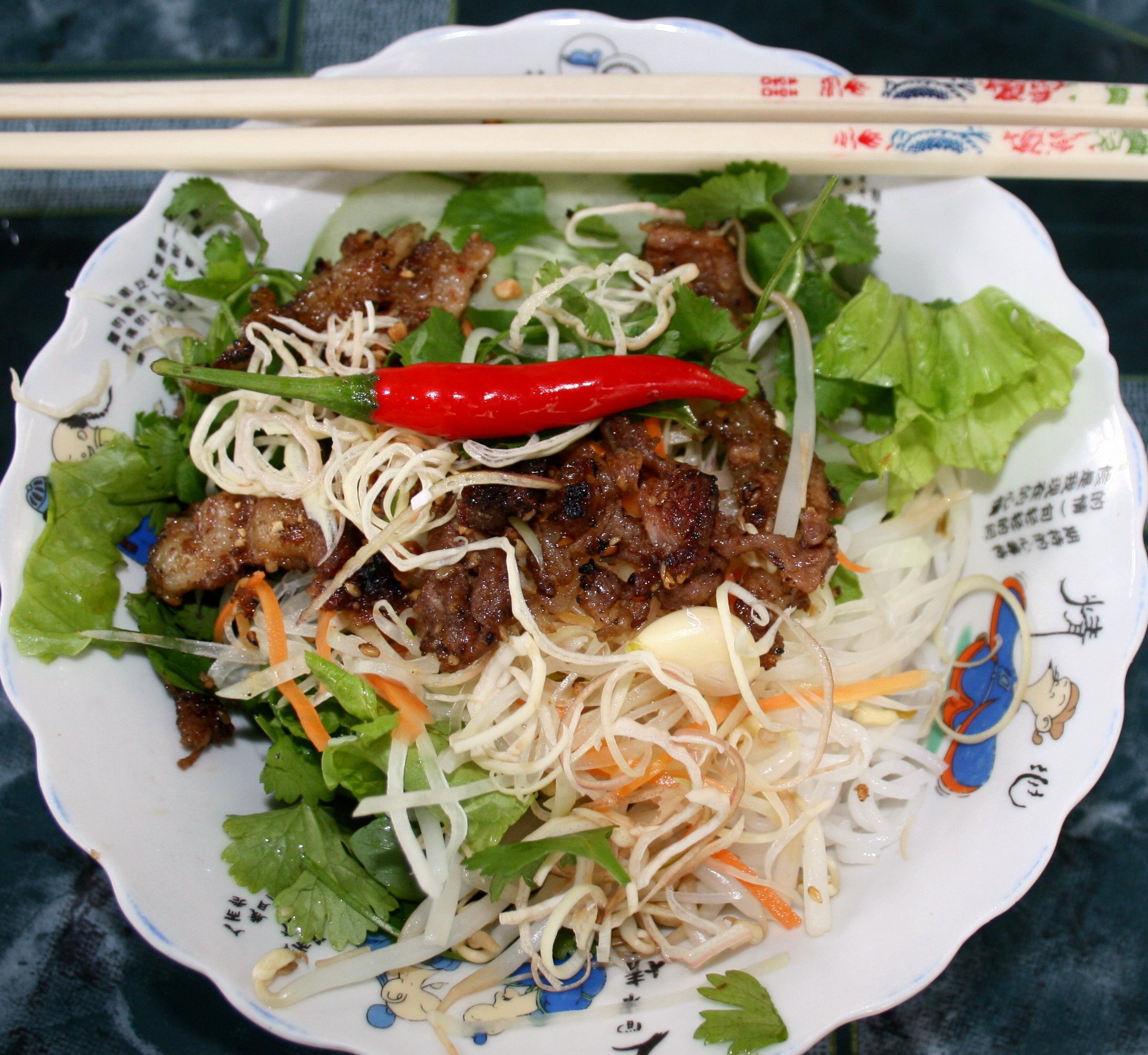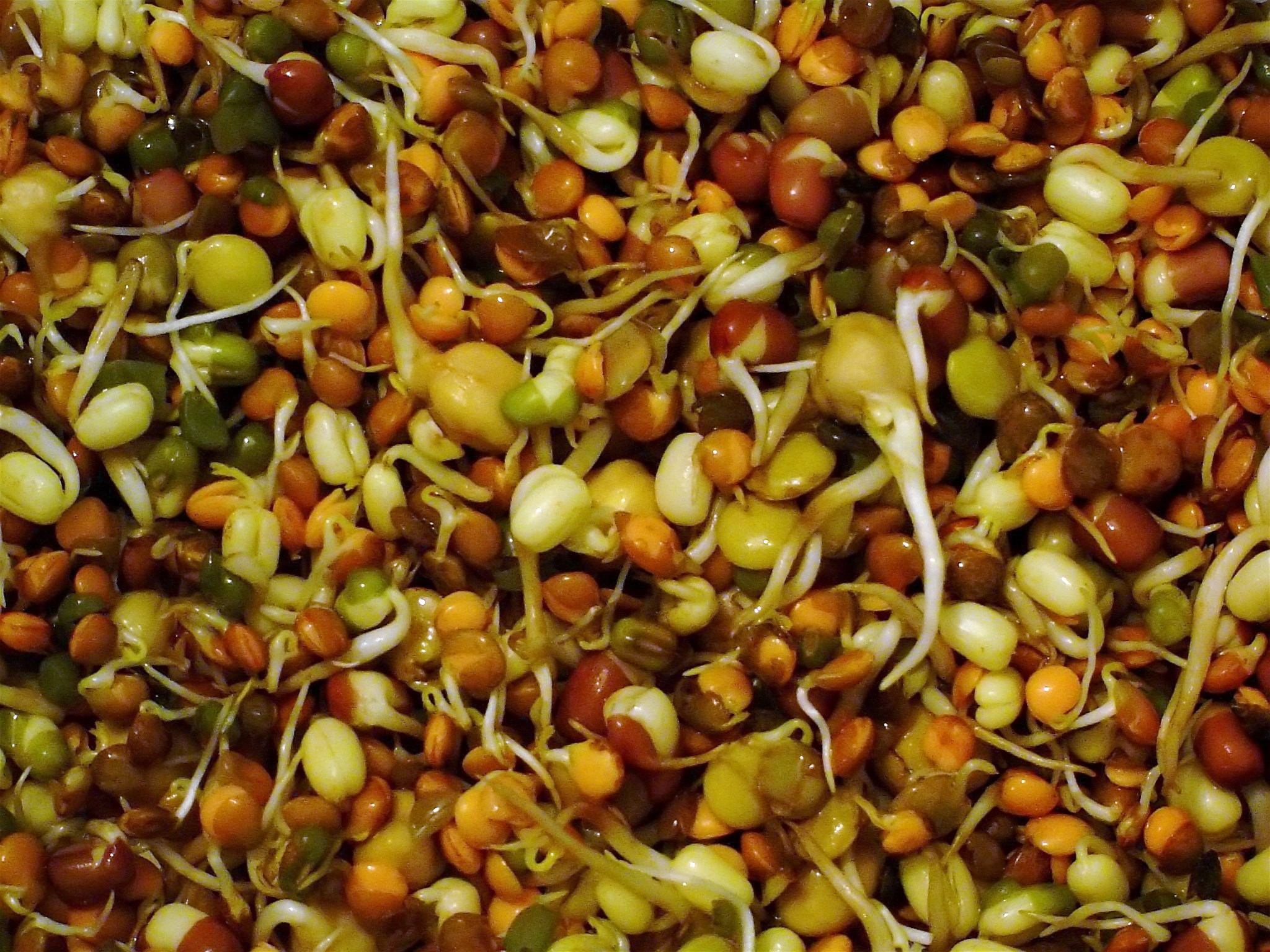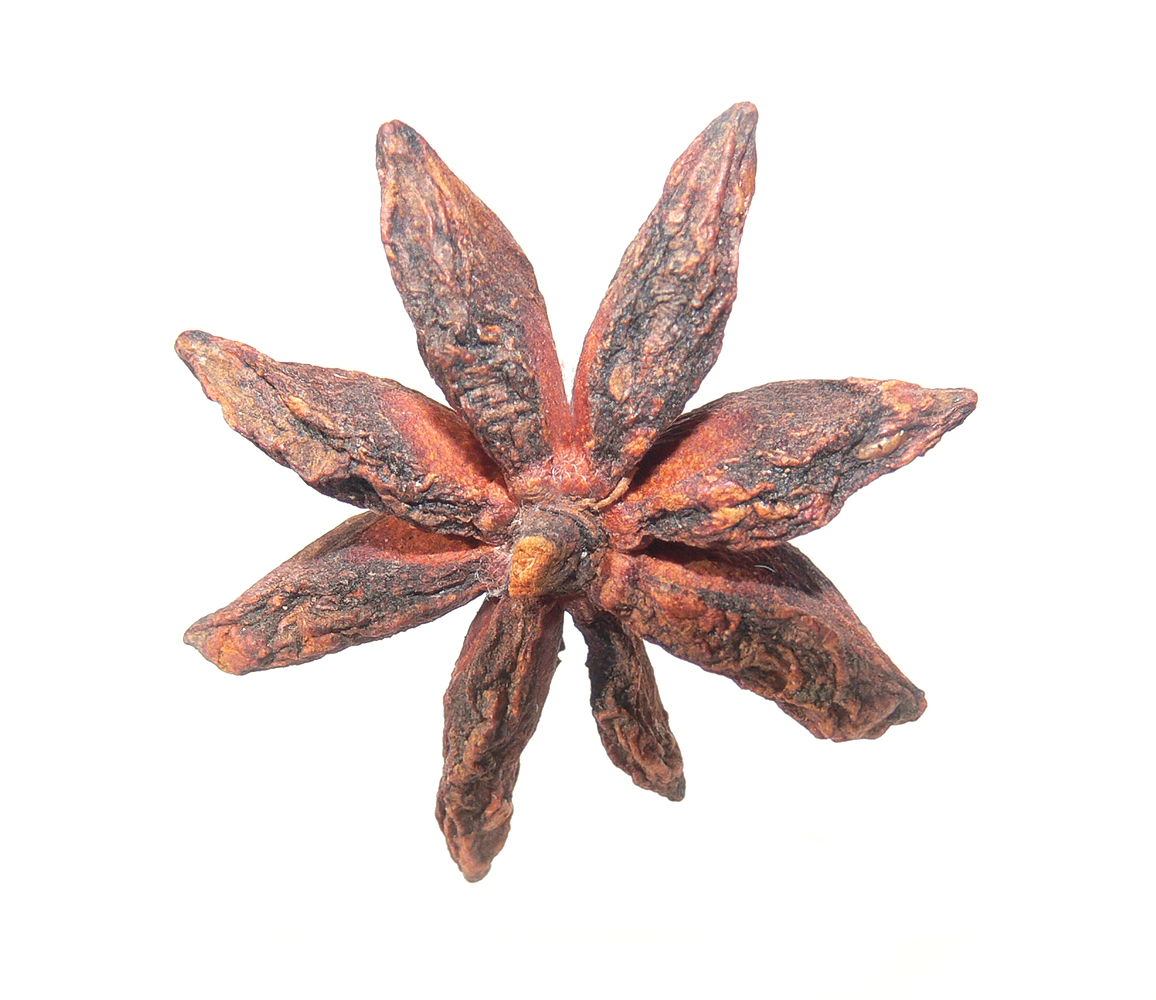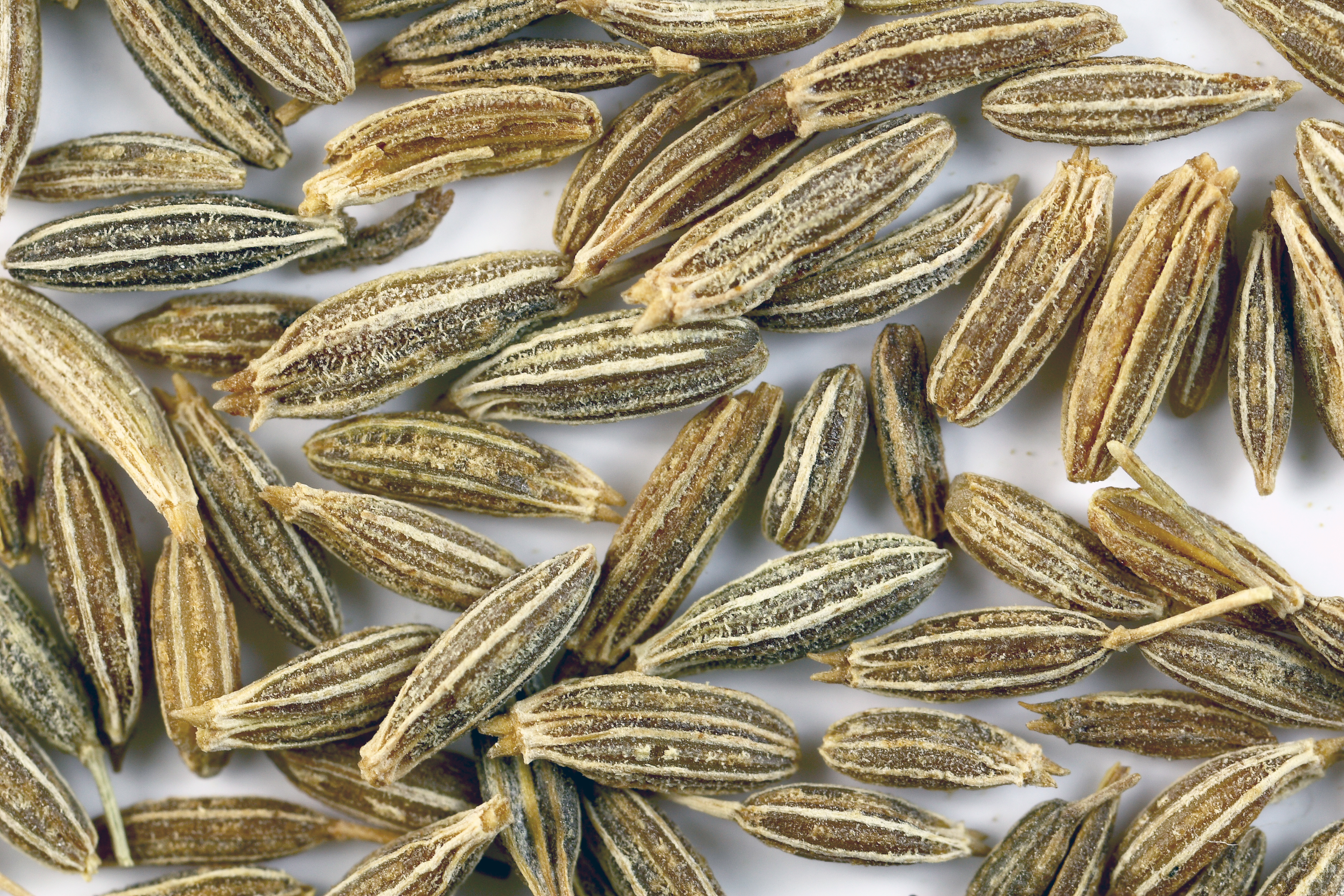|
Mie Aceh
Mie aceh or mi aceh ("Aceh noodle") is an Acehnese curried spicy noodle dish. Ingredients The thick yellow noodles are served with slices of beef, goat meat, lamb, mutton, and seafood, such as shrimp or crab. They are served in rich, hot and spicy curry-like soup. The '' bumbu'' spice mixture consist of black pepper, red chili pepper, shallot, garlic, cardamom, caraway, cumin and star anise. The noodle and spices are cooked with bean sprouts, tomato, cabbage and celery. Mie Aceh usually uses thick yellow noodles, in similar size to Japanese udon noodle and Italian spaghetti pasta. To ensure its authenticity, most of mie Aceh restaurant's noodles are home made. History Mie Aceh demonstrates the cultural history of Acehnese people and foreign influences that formed the Aceh region and its historic role as major port in the region. The curry-based soup was an influence of the neighboring Indian cuisine, while the noodle was Chinese influence. The preference to mutton, goat ... [...More Info...] [...Related Items...] OR: [Wikipedia] [Google] [Baidu] |
Indonesia
Indonesia, officially the Republic of Indonesia, is a country in Southeast Asia and Oceania, between the Indian Ocean, Indian and Pacific Ocean, Pacific oceans. Comprising over List of islands of Indonesia, 17,000 islands, including Sumatra, Java, Sulawesi, and parts of Borneo and New Guinea, Indonesia is the world's largest archipelagic state and the List of countries and dependencies by area, 14th-largest country by area, at . With over 280 million people, Indonesia is the world's List of countries and dependencies by population, fourth-most-populous country and the most populous Islam by country, Muslim-majority country. Java, the world's List of islands by population, most populous island, is home to more than half of the country's population. Indonesia operates as a Presidential system, presidential republic with an elected People's Consultative Assembly, legislature and consists of Provinces of Indonesia, 38 provinces, nine of which have Autonomous administrative divisi ... [...More Info...] [...Related Items...] OR: [Wikipedia] [Google] [Baidu] |
Curry
Curry is a dish with a sauce or gravy seasoned with spices, mainly derived from the interchange of Indian cuisine with European taste in food, starting with the Portuguese, followed by the Dutch and British, and then thoroughly internationalised. Many dishes that would be described as curries in English are found in the native cuisines of countries in Southeast Asia and East Asia. The English word is derived indirectly from some combination of Dravidian words. A first step in the creation of curry was the arrival in India of spicy hot chili peppers, along with other ingredients such as tomatoes and potatoes, part of the Columbian exchange of plants between the Old World and the New World. During the British Raj, Anglo-Indian cuisine developed, leading to Hannah Glasse's 18th century recipe for "currey the India way" in England. Curry was then spread in the 19th century by indentured Indian sugar workers to the Caribbean, and by British traders to Japan. Further exchange ... [...More Info...] [...Related Items...] OR: [Wikipedia] [Google] [Baidu] |
Udon
Udon ( or ) is a thick noodle made from wheat flour, used in Japanese cuisine. There are a variety of ways it is prepared and served. Its simplest form is in a soup as with a mild broth called made from dashi, soy sauce, and mirin. It is usually topped with thinly chopped scallions. Other common toppings include prawn tempura, (mixed tempura fritter), (sweet, deep-fried tofu pouches), (sliced fish cake), and spice added to taste. Standard broth differs by region. Dark soy sauce is added in eastern Japan, while light soy sauce is added in the west. Instant noodles are often sold in two (or more) versions accordingly. More unusual variants include stir-fried and curry udon made with Japanese curry. It is often used in or Japanese hot pot. Dishes Udon noodles are boiled in a pot of hot water. Depending on the type of udon, the way it is served is different as well. Udon noodles are usually served chilled in the summer and hot in the winter. In the Edo period, the thicker ... [...More Info...] [...Related Items...] OR: [Wikipedia] [Google] [Baidu] |
Egg Noodle
Noodles are a type of food made from unleavened dough which is either rolled flat and cut, stretched, or extruded, into long strips or strings. Noodles are a staple food in many cultures and made into a variety of shapes. The most common noodles are those derived from either Chinese cuisine or Italian cuisine. Chinese noodles are known by a variety of different names, while Italian noodles are known as pasta. While long, thin strips may be the most common, many varieties of noodles are cut into waves, helices, tubes, strings, or shells, or folded over, or cut into other shapes. Noodles are usually cooked in boiling water, sometimes with cooking oil or salt added. They can also be steamed, pan-fried, deep-fried, or baked. Noodles are often served with an accompanying sauce or in a soup, the latter being known as noodle soup. Noodles can be refrigerated for short-term storage or dried and stored for future use. Etymology The word for noodles in English was borrowed in the 18 ... [...More Info...] [...Related Items...] OR: [Wikipedia] [Google] [Baidu] |
Cabbage
Cabbage, comprising several cultivars of '' Brassica oleracea'', is a leafy green, red (purple), or white (pale green) biennial plant grown as an annual vegetable crop for its dense-leaved heads. It is descended from the wild cabbage ( ''B. oleracea'' var. ''oleracea''), and belongs to the " cole crops" or brassicas, meaning it is closely related to broccoli and cauliflower (var. ''botrytis''); Brussels sprouts (var. ''gemmifera''); and Savoy cabbage (var. ''sabauda''). A cabbage generally weighs between . Smooth-leafed, firm-headed green cabbages are the most common, with smooth-leafed purple cabbages and crinkle-leafed savoy cabbages of both colours being rarer. Under conditions of long sunny days, such as those found at high northern latitudes in summer, cabbages can grow quite large. , the heaviest cabbage was . Cabbage heads are generally picked during the first year of the plant's life cycle, but plants intended for seed are allowed to grow a second year and m ... [...More Info...] [...Related Items...] OR: [Wikipedia] [Google] [Baidu] |
Tomato
The tomato (, ), ''Solanum lycopersicum'', is a plant whose fruit is an edible Berry (botany), berry that is eaten as a vegetable. The tomato is a member of the nightshade family that includes tobacco, potato, and chili peppers. It originated from and was domesticated in western South America. It was introduced to the Old World by the Spanish in the Columbian exchange in the 16th century. Tomato plants are vines, largely Annual plant, annual and vulnerable to frost, though sometimes living longer in greenhouses. The flowers are able to self-fertilise. Modern varieties have been bred to ripen uniformly red, in a process that has impaired the fruit's sweetness and flavor. There are thousands of cultivars, varying in size, color, shape, and flavor. Tomatoes are attacked by many insect pests and nematodes, and are subject to diseases caused by viruses and by mildew and blight fungi. The tomato has a strong savoury umami flavor, and is an important ingredient in cuisines around ... [...More Info...] [...Related Items...] OR: [Wikipedia] [Google] [Baidu] |
Bean Sprout
Sprouting is the natural process by which seeds or spores germinate and put out shoots, and already established plants produce new leaves or buds, or other structures experience further growth. In the field of nutrition, the term signifies the practice of germinating seeds (for example, mung beans or sunflower seeds) to be eaten raw or cooked, which is considered more nutritious. Suitable seeds All viable seeds can be sprouted, but some sprouts, such as kidney beans, should not be eaten raw. Bean sprouts are a common ingredient across the world. They are particularly common in Eastern Asian cuisine. It typically takes one week for them to become fully grown. The sprouted beans are more nutritious than the original beans, and they require much less cooking time. There are two common types of bean sprouts: * Mung bean sprouts, made from greenish-capped mung beans * Soybean sprouts, made from yellow, large-grained soybeans Common sprouts used as food include: * ... [...More Info...] [...Related Items...] OR: [Wikipedia] [Google] [Baidu] |
Star Anise
''Illicium verum'' (star anise or badian, Chinese star anise, star anise seed, star aniseed and star of anise) is a medium-sized evergreen tree native to South China and northeast Vietnam. Its star-shaped pericarps harvested just before ripening are a spice that closely resembles anise in flavor. Its primary production country is China, followed by Vietnam and other Southeast Asian countries. Star anise oil is highly fragrant, used in cooking, perfumery, soaps, toothpastes, mouthwashes, and skin creams. Until 2012, when they switched to using genetically modified '' E. coli'', Roche Pharmaceuticals used up to 90% of the world's annual star anise crop to produce oseltamivir (Tamiflu) via shikimic acid. Etymology and nomenclature ''Illicium'' comes from the Latin meaning "entice" or "seduce".Gledhill, David (2008). "The Names of Plants". Cambridge University Press. (hardback), (paperback). pp 210, 400 ''Verum'' means "true" or "genuine". The name "badian" appears to ... [...More Info...] [...Related Items...] OR: [Wikipedia] [Google] [Baidu] |
Cumin
Cumin (, ; ; ''Cuminum cyminum'') is a flowering plant in the family Apiaceae, native to the Irano-Turanian Region. Its seeds – each one contained within a fruit, which is dried – are used in the cuisines of many cultures in both whole and ground form. Although cumin is used in traditional medicine, there is no high-quality evidence that it is safe or effective as a therapeutic agent. Etymology and pronunciation The term comes via Middle English ''comyn'', from Old English ''cymen'' (which is cognate with Old High German ''kumin'') and Old French cummin, both from the Latin term . This in turn comes from the Ancient Greek (), a Semitic languages, Semitic borrowing related to Hebrew language, Hebrew () and Arabic (). All of these ultimately derive from Akkadian language, Akkadian (). The English word is traditionally pronounced (), like "coming" with an ⟨n⟩ instead of ⟨ng⟩ (/ŋ/)."Cumin." '' A Way with Words'' (Radio broadcast/podcast). 25 October 2014. Re ... [...More Info...] [...Related Items...] OR: [Wikipedia] [Google] [Baidu] |
Caraway
Caraway, also known as meridian fennel and Persian cumin (''Carum carvi''), is a biennial plant in the family Apiaceae, native to western Asia, Europe, and North Africa. Etymology The etymology of "caraway" is unclear. Caraway has been called by many names in different regions, with names deriving from the Latin ( cumin), the Greek ''karon'' (again, cumin), which was adapted into Latin as (now meaning caraway), and the Sanskrit ''karavi'', sometimes translated as "caraway", but other times understood to mean "fennel".Katzer's Spice PagesCaraway Caraway (''Carum carvi'' L.)/ref> English use of the term caraway dates to at least 1440, possibly having Arabic origin.Walter William Skeat, Principles of English Etymology, Volume 2, page 319. 189Words of Arabic Origin/ref> Description The plant is similar in appearance to other members of the carrot family, with finely divided, feathery leaves with thread-like divisions, growing on stems. The main flower stem is tall, wit ... [...More Info...] [...Related Items...] OR: [Wikipedia] [Google] [Baidu] |
Cardamom
Cardamom (), sometimes cardamon or cardamum, is a spice made from the seeds of several plants in the genus (biology), genera ''Elettaria'' and ''Amomum'' in the family Zingiberaceae. Both genera are native to the Indian subcontinent and Indonesia. They are recognized by their small seed pods: triangular in cross-section and spindle-shaped, with a thin, papery outer shell and small, black seeds; ''Elettaria'' pods are light green and smaller, while ''Amomum'' pods are larger and dark brown. Species used for cardamom are native throughout tropical and subtropical Asia. The first references to cardamom are found in Sumer, and in Ayurveda. In the 21st century, it is cultivated mainly in India, Indonesia, and Guatemala. Etymology The word ''cardamom'' is derived from the Latin , as a Latinisation (literature), Latinisation of the Greek language, Greek (), a compound of (, "Garden cress, cress") and (), of unknown origin. The earliest attested form of the word signifying "cres ... [...More Info...] [...Related Items...] OR: [Wikipedia] [Google] [Baidu] |
Garlic
Garlic (''Allium sativum'') is a species of bulbous flowering plants in the genus '' Allium''. Its close relatives include the onion, shallot, leek, chives, Welsh onion, and Chinese onion. Garlic is native to central and south Asia, stretching from the Black Sea through the southern Caucasus, northeastern Iran, and the Hindu Kush; it also grows wild in parts of Mediterranean Europe. There are two subspecies and hundreds of varieties of garlic. Garlic has been used for thousands of years as a seasoning, culinary ingredient, traditional medical remedy; it was known in many ancient civilizations, including the Babylonians, Egyptians, Romans, and Chinese, and remains significant in many cuisines and folk treatments, especially across the Mediterranean and Asia. Garlic propagates in a variety of climates and conditions and is produced globally; China is by far the largest producer, accounting for over two thirds (73%) of the world's supply in 2021. Description Garli ... [...More Info...] [...Related Items...] OR: [Wikipedia] [Google] [Baidu] |

